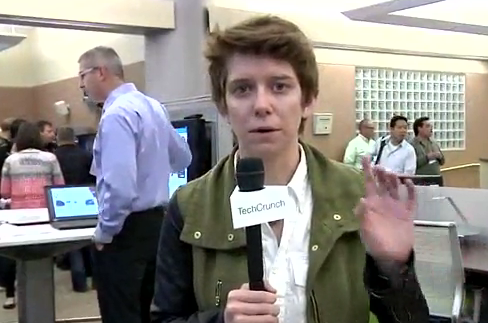Yesterday, I was lucky enough to venture into the depths of AT&T’s New York offices and check out the Research Lab. In essence, AT&T has about a zillion APIs that relate to cloud computing, navigation, translation, and a plethora of other fun technology, and its researchers then take those platforms and create really interesting products.
We met up with Don Henderson, who’s built an app called Got My Stuff, which basically makes sure that you aren’t leaving anything at home when you get in the car. Using RFID tags, the car will instantly scan its own contents as you twist the key in the ignition. Anything you’ve previously tagged, including a phone, wallet, bag, laptop, or sunglasses, will be displayed on a check list. If you’ve forgotten it, the check list will notify you.
You can even change the list of items based on where you’re going. If you’re headed to work, you’ll likely need very different items than you would if you were driving your kids to school. The idea is that car OEMs will build this system right into their cars, so that it’s up and running as you make your purchase.
Another cool prototype we saw is bio-acoustical transmission. It’s a bit complex, but at its core the idea is that even the slightest movement in your body creates vibrations in your bones (and thus, noise). If a sensor is placed on my wrist, it can detect the noises I’m making through tiny finger gestures, and a command can be attached to those gestures. But developer Brian Amento took this a step further, realizing that a phone could transfer those vibrations from myself to another system. In this case, it’s a locked door.
So Brian built an app to mark whether or not you’re the owner of a house, or just a visiting friend. If you’re the owner, the door will automatically unlock and open once you touch the handle, as long as you’re touching the phone or any other sensor that can pick up your vibrations. If you’re a visitor, the window in the door will become translucent and the system will announce you as the visitor to anyone chilling in the house.
Very cool, to be sure.
Last but certainly not least, we got the chance to check out a connected Porsche model that was built in conjunction with AT&T, QNX, and Panasonic. The car employs AT&T’s Watson Speech API (so that you can talk to it), along with AT&T’s LTE network and cloud computing infrastructure.
By using those APIs, the car can take information from the driver and integrate that request with the cars internal systems like GPS to bring up local shops, or perform other tasks. As you can see in the video, the system isn’t quite ready for full-scale deployment, but it’s a good start to say the least.
